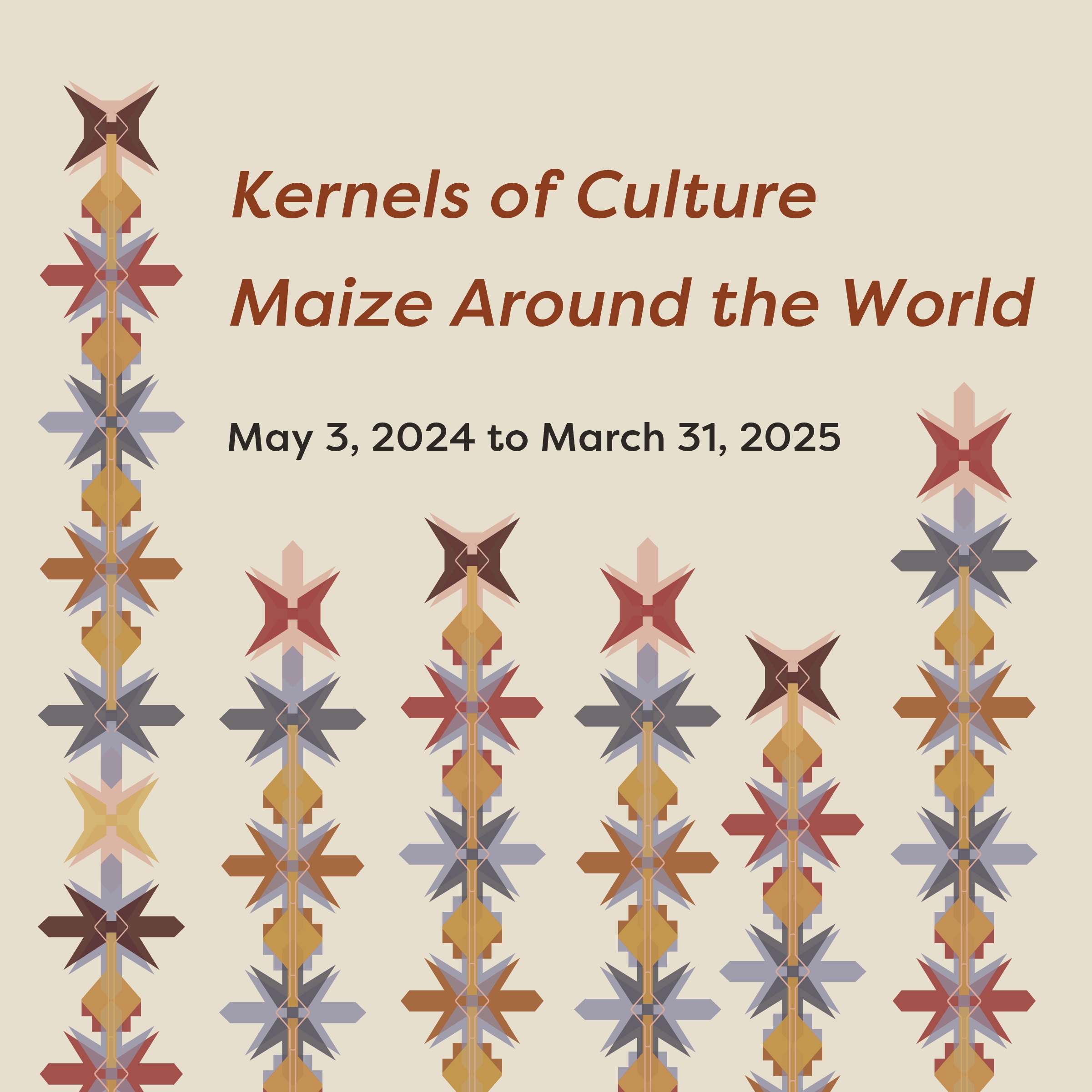
Kernels of Culture: Maize Around the World (May 3, 2024 – March 31, 2025) at the Stephen and Peter Sachs Museum focuses on the complex story of one of the world’s most important crop plants, maize (Zea mays), which is used by billions of people every day, for food, for animal feed, and as biofuel. This history begins thousands of years ago with the first Indigenous farmers in southern Mexico who hybridized these plants continuously, domesticating the kernels of teosinte—the acknowledged wild grass ancestor to maize—to the corn cobs we grow and use today. The exhibition features the Missouri Botanical Garden’s historical maize specimens, ancient and contemporary objects used to process and enjoy corn as food and drink. It highlights contemporary farmers who grow maize for their communities and contemporary scientists who are leading the research on corn genetics and diversity. Maize is expressed in art by St. Louis-area students celebrating corn and commissioned artworks made by St. Louis artists exploring both the spiritual and scientific impact of this beautiful plant.
ACKNOWLEDGEMENTS:
Thanks to all of these contributors, collaborators and supporters to the Sachs Museum’s exhibition and programs who shared their expertise, passion, and creativity on maize, art, farming, foods, community, tools, and pop culture.
Grateful thanks to Nancy Ridenour for sponsorship of the artwork commissions in the exhibition, and to artists Waleska Font and Megan Singleton for creating amazing installations expressing the wonder of maize.
Contributors of research and lenders of objects and images to the exhibition: Dr. Katie Murphy and Clara Lebow, Danforth Plant Science Institute; Dr. Sherry Flint-Garcia, Susan Melia-Hancock and Miriam Nancy Salazar Vidal, USDA and University of Missouri Columbia; Kristina Hampton and Cameron Fuller, Saint Louis Science Center; Dr. Susan Kooiman and Regina Fairbanks; Elyse Zorn Karlin, John Nels Hatleberg, Tom Herman; Ralph Haynes and Pinckney Bend Distillery; Dr. Michael Kotutwa Johnson, Dail Chambers, Brooke Rice and Martin Loft; Arizona State Museum: University of Arizona; Carolina Holtmeyer, Sandra Giger, Viva Brasil StL; Shannon Hoch, Marilyn Lanning, Missouri Meerschaum Company; Missouri Historical Society, St. Louis, Photographs and Prints Department.
Jessica Harjo of Weomepe Designs for the design expertise, Andi Kur for the illustrations, and Virginia Harold for installation photography.
Thanks to Garden staff who shared their expertise and collections on view here: Dr. Peter Wyse Jackson, Dr. Jordan Teisher, Lauren Boyle and Victoria Patrick; Dana Kelly and Jim Kuchar; Dr. Carmen Ulloa Ulloa; Dr. Robbie Hart, Dr. Charlie Miksicek, Dr. Kate Farley, Carolina Romero, and Aurora Prehn; Heidi Schmidt; Fred Gauna, Tad Yankoski, and Chris Hartley; Mitzi Streeter and Michael Ritchie; Jennifer Wolff and Emily Spuhler; Linda Fiehler, Susie Ratcliff, John Steinmetz, and Rowen Conry.
Generous thanks to all the art teachers, schools, and students who created maize artworks for the exhibition: Paige Boyer, Clark Elementary School; Dail Chambers, Coahama Orchards & Educational Farm; Elaine Eversgerd, Hazelwood West Middle School; Jami Heflin, Harvest Ridge Elementary School; Emily Hemeyer, Cabrini Academy; Catherine Jeltes, Little Flower School; Dawn Lynn, Willow Brook Elementary; Dr. Nancy Parks, Kipps Wisdom Academy; Michelle Petke, Willow Brook & Parkwood Elementary Schools; Kari Schepker-Mueller, Maplewood Richmond Heights Early Childhood Center; Kate Valleroy and Katherine Switzer, Grand Center Arts Academy; Ann Wright, St. Ambrose on The Hill Catholic School; and Rosemary Ziegler, Troy Buchanan High School. Thanks to Kristen Leonard and Zak Zavada for printing all the digital submissions for the exhibition.
Especial thanks to the Sachs Museum remote interns who contributed to the research and text, for the exhibition: Annie Farrell, Kyra Tani Little, Melanie Vera, Kristina DeGreef, Caleigh Dinger, Allison Fabrizio, Chelsea Lenay Hecox, Cece Qian Zhang, Pui Yu Ma, Zoe Lee, Karina Ceron, Bee Tham, Mary J. Erickson, Giovanni Aguirre Mazzi, Kimberly Mapanao, Zoe Rios, John Justice, Paris Hubler, Leah Sutton, and Matthew Hanks.
~ Nezka Pfeifer, Museum Curator, Stephen and Peter Sachs Museum #KernelsOfCulture
View Exhibition Catalog
View Virtual Tour
Read Exhibition Blog Post >
The Kernels of Culture exhibition opened the inaugural Sachs Museum Performance Series highlighting unique Saint Louis performers who have created contextual material interpreting maize and its cultural impact on societies in the Americas. This series is free with Garden admission and is generously supported by Nancy Ridenour.
SACHS MUSEUM PERFORMANCE SERIES:
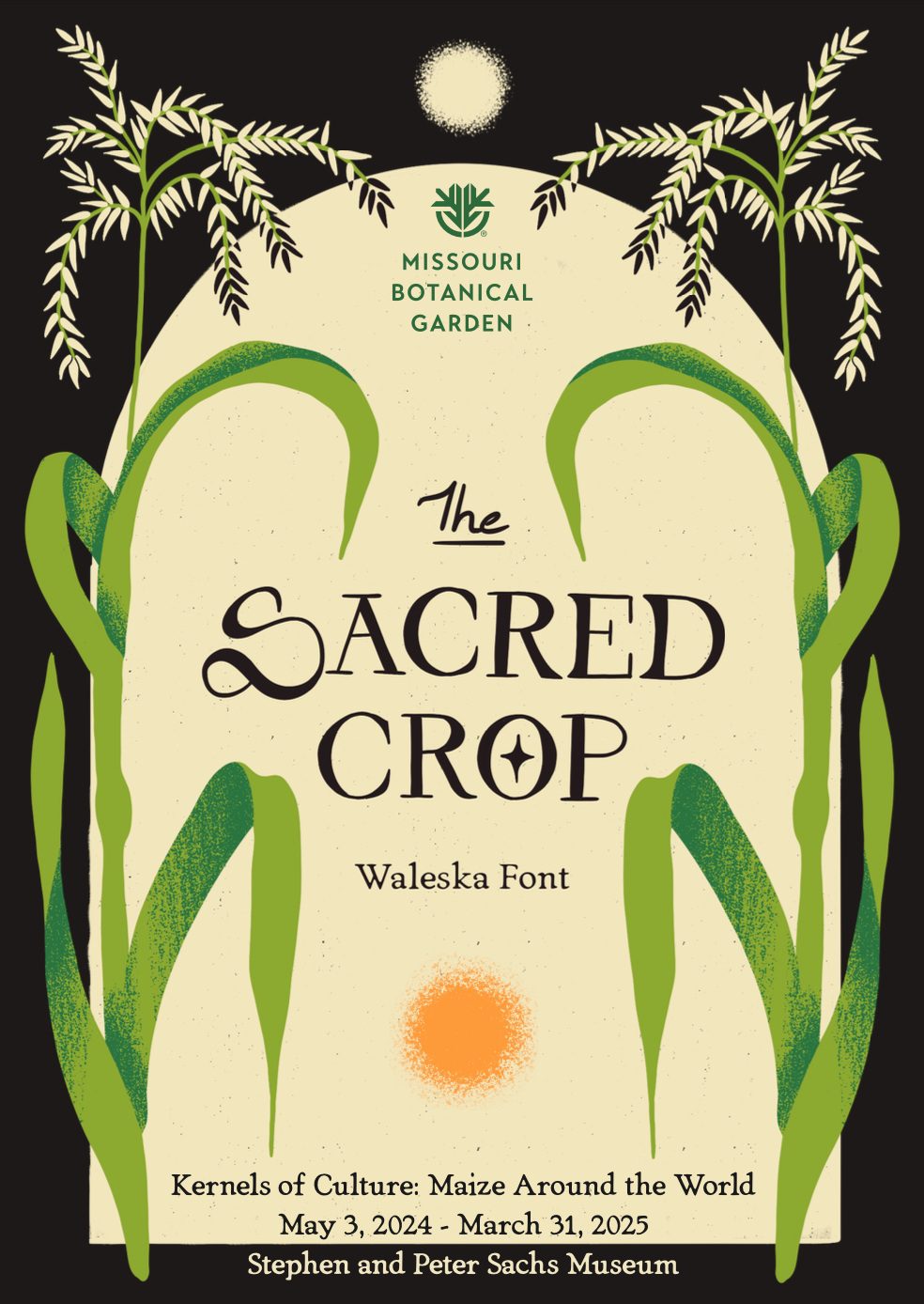
June 29, 2024: “The Sacred Crop” featuring poet Waleska Font and guitarist Patrick Raffert
View recording >
Download The Sacred Crop zine >
August 10, 2024: “A Corn-Fed Musical Comedy Performance” by Opera Bell Band | View recording >
September 21, 2024: “Harmonies of the Andes” by Intillajata Andean Ensemble
View recording >
October 12, 2024: “Appropriation: The Spanish Guitar, Maize and The New World” by Patrick Rafferty
View recording >
ARTISTS TALK:
Thursday, September 19, 2024: Maize in Art and Community: Dail Chambers and Megan Singleton
This Earthen Door
November 2023–March 31, 2024
Made over the course of three pandemic years, This Earthen Door is a special artwork series by Amanda Marchand and Leah Sobsey, artists who were inspired by American poet’s Emily Dickinson’s (1830-1886) personal herbarium scrapbook that she started when she was 14 years old. In a gesture honoring Dickinson’s effort made nearly 200 years ago and galvanized by the fact that her herbarium is now too delicate for viewing, Marchand and Sobsey gathered plants and flowers from their gardens to remake her sampler with an early plant-based photographic process known as an anthotype. Visit This Earthen Door in the South Gallery of the Stephen and Peter Sachs Museum from early November to March 31, 2024.
Read Our Blog on the Exhibition
On view May 2022 through March 2023, the Botanical Resonance: Plants and Sounds in the Garden exhibition at the Stephen and Peter Sachs Museum at the Missouri Botanical Garden explored how plants create and cause sounds in our natural environment and cultural arenas.
The exhibition featured different plants used to create musical instruments in cultures around the world, as well as how different plants make unique sounds throughout their lifecycles in nature and in the Garden. For the species used to make instruments, many often become jeopardized and threatened in their native environments due to the increasing production and demand for the desirable plant material.
Botanical Resonance included three contemporary artists who were commissioned to create artwork installations that interpret sound in several different ways: soundwalks by Annika Kappner, an immersive quilt installation by Brooke Erin Goldstein, and an immersive sound installation by St. Louis artist Kevin Harris.
Exhibition Talk Series
Learn more from each of the artists who created artworks for the Botanical Resonance exhibition in a special talk series.
Brooke Erin Goldstein, REVERBERATIONS
View recording >
Kevin Harris, WELCOME HOME HABITAT
View recording >
Annika Kappner, LIQUID LANDSCAPES
View recording >
Explore the Exhibition
Botanical Resonance virtual tour
Exhibition Blog Posts
Annika Kappner’s LIQUID LANDSCAPES soundwalks: Path 1 and Path 2
Enjoy these soundwalks at Museum or explore your own natural soundscapes.
Grateful thanks to these sponsors for their support of the exhibition.
Nancy and Kenneth Kranzberg
The Thomas A. Kooyumjian Family Foundation
Tony and Cindy Kooyumjian
Artists Brooke Erin Goldstein, Kevin Harris, and Annika Kappner
Generous thanks to these contributors of research and lenders of collections and images to the exhibition: Scott Paul, Taylor Guitars; Steve McMinn and Kevin Burke of Pacific Rim Tonewoods and Siglo Tonewoods; Ric Kokotavich; Dr. Kasey Fowler-Finn, St. Louis University and Dr. Kika Tuff, Impact Media Lab; A.J. Hendershott; Eduardo Aguirre-Mazzi; Michael Nelson; Ryan Bouma; Dr. Annie Hounsokou; Thomas Jöstlein; Tzuying Huang; Cally Banham.
Many thanks to designer Michael Powell for the design expertise and Virginia Harold for installation photography. Social media planning and graphic inspiration thanks to Rogério Victor Satil Neves.
Special acknowledgments to Garden staff who shared their expertise and collections on view here: Dr. Peter Wyse Jackson, Dr. Carmen Ulloa Ulloa, Dr. Robbie Hart, Dr. Armand Randrianasolo, Carolina Romero, Aurora Prehn, Fortunat Rakotoarivony, Tefy Andriamihajarivo, Tabita Randrianarivony, Nivo Rakotoarivelo, Lucien Rasoaviety, Aina Razanatsima, Dr. Pete Lowry, Dr. George Schatz, Peter Phillipson, Heidi Schmidt, Dr. Jordan Teicher, Mary Merello, Lauren Boyle, Colin Robinson, Sally Bommarito, Mike Blomberg, Dr. Matthew Albrecht, Burgund Bassener, Cassidy Moody, Catherine Martin, Emma Rush, Linda Fiehler, Denise Trull, Elizabeth Moore, Travis Hall, Matthew Norman, Derek Lyle, Jennifer Smock, Dana Kelly, Daria McKelvey, Julie Hess, Mariel Tribby, William Desch, David Gunn, Senad Duracak, and Garden designers Ellen Flesch and Teresa McBryan.
Especial thanks to the Sachs Museum remote interns who contributed to the research and text, for the exhibition: Stefanie Hermsdorf, Alexandra Lebovitz, Chris Kitamura, Caleigh Dinger, Yumi Chung, Brianna Nielsen, Gabrielle Visco, Kristina de Greef, Josephine Grigg, Madeline Halstead, Rachel Gonzalez, Sarah Winski, Gabriel Casillas, Emily Tinglan Cai, Clara Rush, Melanie Vera, Paris Hubler, Britny Cordera, Ida Chen, Cait Mohr, Kellee Cross, and Ana Moreno.
May 2021–March 2022
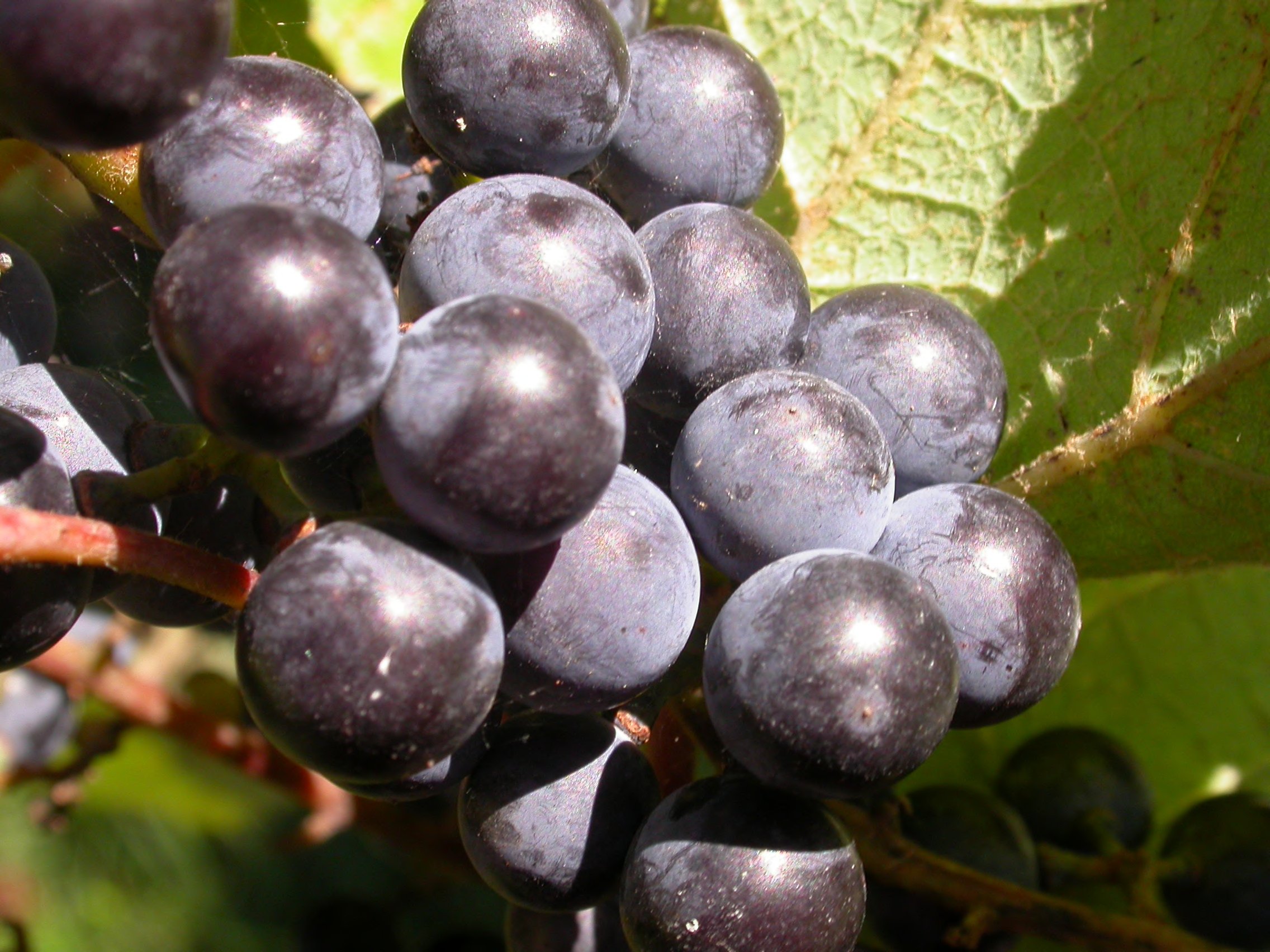
For millennia, humans have cultivated wine as a drink and for social, religious, and economic power. Drunk for social communion, held as a symbol of elite status, and offered in ritual ceremonies, wine made from the grapes of Vitis vinifera has been shipped and transplanted around the world, with the earliest winemaking traditions found in central Asia thousands of years ago. Today, wine enthusiasts are very familiar with the world-renowned wines that are grown in Europe, South America, South Africa, Australia, New Zealand, and the United States. Yet, drinking wine from this grape species would not be possible today without the research, identification, and development of 19th-century Missouri botanists, entomologists, and viticulturists.
A key culprit in this agricultural innovation is the result of an insect, Grape phylloxera, which found its way from the American Midwest to the vineyards of Europe in the 1850s; by the 1870s it had devastated the wine grape crop there, attacking and feeding on the plants’ roots to the point of killing the plants completely. It was the work of the Garden’s first botanist, Dr. George Engelmann, and the Missouri state entomologist Charles V. Riley, that identified the lifecycle of grape phylloxera (as evidenced on the native American grapevine plants and rootstock) as the cause of the devastation. In detecting the root cause of the problem, Engelmann and Riley worked with viticulturists to promulgate the idea of grafting the European grapevine (the scion) onto the American grapevine rootstock to allow for the European winemaking traditions to continue and develop as they had for centuries.
Contemporary artists were commissioned to make unique artworks interpreting this significant viticultural history and innovation. Dornith Doherty, renowned for her photographic work on seeds and global seedbanking, created three works in her series Roundabout (Circuition) especially created for the Grafting the Grape exhibition, which are inspired by the intersection of the historical innovation and the contemporary scientific research taking place in Dr. Allison Miller’s Vitis Underground project. Artist collaborators inspired by the impact of climate change on grapevines, Lei Han and Lorraine Walsh focused their work for Grafting the Grape on environmental shifts as seen through the seemingly disparate practices of ancient horticultural grafting techniques and contemporaneous machine learning (a subset of artificial intelligence). They created one sculpture, one series of drawings, two series of digital images, and three series of short films for the exhibition. Their art focuses on the native grapevine species Missouri Vitis aestivalis (also known as the Norton grape) and the process of this mediation in order to bring a fruitful awareness of the significant effect climatic change has on life.
The Grafting the Grape exhibition explores the various American grape species that are most used in viticulture, grafting, and winemaking, and how they were and continue to be used by the Native peoples of Missouri. Today, these American grapevine rootstock species continue to provide research challenges as scientists study and understand how the rootstock plants affect the scion plant’s berries and chemical compounds (which affect the final wine product) as well as how climate change is impacting the future of viticulture around the world.
Sponsored by
The Thomas A. Kooyumjian Family Foundation
Tony and Cindy Kooyumjian
National Science Foundation Plant Genome Research Program 1546869
The Missouri Botanical Garden’s Corporate Council with gifts from:
Neil Adams; Commerce Bank; Christi Dixon; C. Eric Lobser; Linda Lockwood; Protiviti; Regions Bank; Chris Schmidt; Julia
Steininger; UMB Bank; UHY Advisors; Steve Wang
Upcoming Virtual Events:
ASL interpretation and live captioning provided for each program, and presentations will be recorded for later viewing on the Missouri Botanical Garden YouTube channel.
Visit Grafting the Grape Virtually:
You can now take a 360-degree virtual tour of the Sachs Museum and its current exhibit at this link.
Grafting the Grape Exhibit Film:
View Behind the Scenes of Grafting the Grape: Science, History, and Art at this link.
Grafting the Grape Exhibition Publication:
Read the Grafting the Grape booklet at this link.
Grafting the Grape Blog Series:
Grafting the Grape: American Grapevine Rootstock in Missouri and the World
Grafting the Grape: Indigenous Use of Grapes
Grafting the Grape: The Rich History of Georgian Winemaking
Grafting the Grape: Behind the Artwork
Grafting the Grape Virtual Lecture Series:
Watch Now: Missouri Vines and Wines: Then and Now
Watch Now: Archeology of American Indigenous Peoples' Use of Grapes
Watch Now: Missouri Viticulture in a Family Winery
Watch now: Choctaw Foodways
Watch Now: Art and Science Dialogue
Watch Now: Climate Change in Art
Acknowledgements:
•Artists Dornith Doherty, Lei Han, and Lorraine Walsh
•Allison Miller, Saint Louis University and Danforth Plant Science Center; National Science Foundation Plant Genome Research Program 1546869.
•Keith Duncan, manager of the X-ray imaging facility and research scientist in Chris Topp's lab at the Donald Danforth Plant Science Center
•Laura L. Klein, Head Curator, Director of Herbal Research, LeafWorks Inc.; and Alex Roach, Director, Modified atmospheres, Australia
•Michael J. Leonardelli, exhibition researcher and Aurora Prehn, exhibition researcher
•Susan Kooiman, Assistant Professor, Anthropology, Southern Illinois University Edwardsville; Emma Warner, Southern Illinois University Edwardsville
•Additional Sachs Museum program series presenters: Ian Thompson, Choctaw Nation Tribal Preservation Officer; Steffie Littlefield and Cyndy Keesee, Edg-Clif Vineyard, Winery & Brewery
•Thomas F. Bush, Bush family descendant and Missouri Botanical Garden volunteer
•David Maghradze, Institute of Horticulture, Viticulture and Oenology, Tbilisi, Georgia & National Wine Agency of Georgia; Tamar Maghradze, Viticulture & Enology University of Turin; Marina Mosulishvili, Ilia State University, Curator Georgian National Museum, TGM Herbarium; Nana Bitsadze, Agricultural University of Georgia, Curator Mycological Herbarium and Fungal Culture Collection; Anzor Uzunashvili, Winemaker Mukado Wines.
•Special acknowledgments to Garden staff who shared their expertise and collections on view here: Dr. Peter Wyse Jackson, Jim Solomon, Mary Merello, Sally Bommarito, Lauren Boyle, Fred Gauna, Tad Yankoski, Chris Hartley, Jennifer Smock, Robbie Hart, Aurora Prehn, Haley O’Toole, Cassidy Mooody, Doug Holland, Andrew Colligan, Mike Blomberg, Susie Cobbledick, and Garden designers Mary Shocklee and Ellen Flesch.
•Especial thanks to the Sachs Museum remote interns who contributed to the research, text, and illustrations of the exhibition: Alexandra Lebovitz, Megan Rossman, Anne Farrell, Natalia Granquist, Heather Sheppard, Danielle Griffin, Elias Larralde, Isobel Abbot-Dethrow, Eleanor Schulz, Kyra Tani Little, Edina Krantic, Charlotte Filiciotto, Anna Wachtel, Kimberly Schwartz, Yukeria Haywood, Mackenzie Shields, and Alex Arata.
August 2020–March 2021
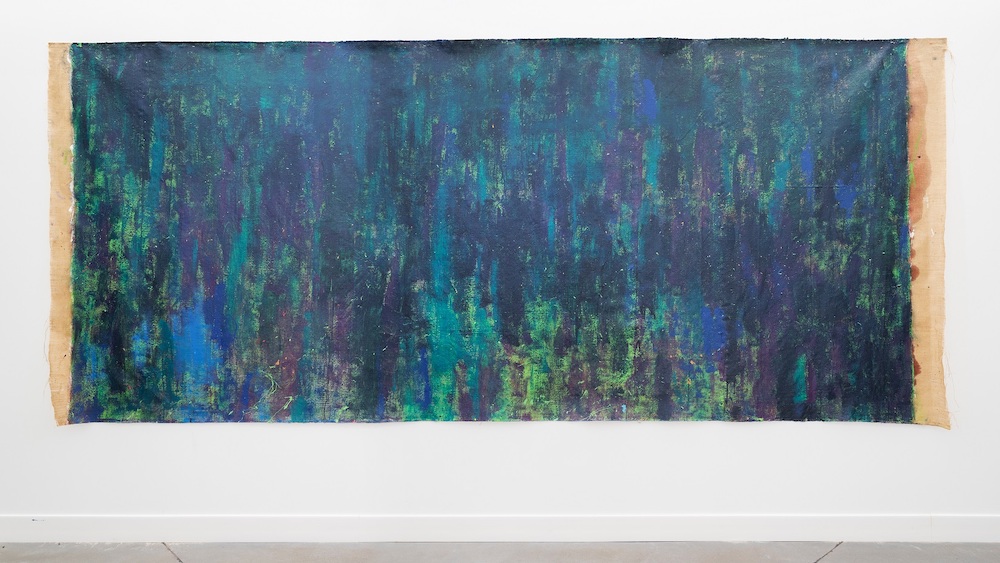
Les Nymphéas: A Different Point of View, Immersion, Reflections by Arslan, Oil on canvas, Ca. 2019–2020, Courtesy of The Bee in the Lion, gallery in New York; Photo credit: Virginia Harold.
Humans have been captivated by water lilies for millennia. As one of the earliest known groups of angiosperms (seed-producing flowering plants), water lilies are perfectly constructed for life on the water and in aquatic environments, both natural and human made. Native to tropical and temperate climates, the family Nymphaeaceae is named from the Greek for the mythical water nymphs, feminine nature spirits that presided over bodies of water. Appearing in the fossil record from the Early Cretaceous period (125–115 million years ago), water lilies have been found as seeds, flowers, stems, pollen, and leaves. As aquatic rhizomatic plants, water lilies are rooted in soil in water, and the flowers and leaves emerge and float on the water’s surface; they are pollinated by beetles, bees, and flies, but can also be self-or wind-pollinated. The ancient cultures of Egypt and Mexico were mesmerized by water lilies. These plants represented several deities, and the underworld, and were often considered a symbol of rebirth and everlasting life.
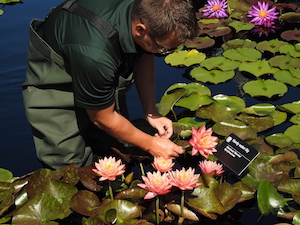
The Missouri Botanical Garden has one of the most significant and historic live collections of water lilies. Since the late 19th century, the Garden has hosted aquatic plants on the grounds and in the greenhouses, and several horticultural specialists have focused their talents and vision to propagate and design the Garden’s water lily pools to have a spectacular show of many species and cultivars every summer. This exhibition focuses on the Garden’s history and collections of these exquisite plants and offers an aesthetic interpretation of the beauty of the Garden’s water lilies’ by artist Arslan, who was inspired by Claude Monet’s important series of water lily paintings, Les Nymphéas, which are on permanent view at the Musée de l’Orangerie in Paris. Enjoy the artworks and specimens in the exhibition, and then make sure to find and delight in the water lilies as they grow and bloom in the pools around the Garden from May to October.
Virtual Offerings
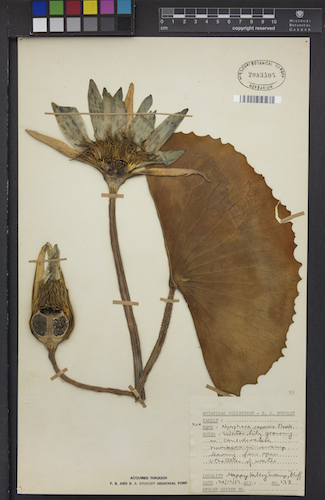
Acknowledgments:
Grateful thanks to Deborah and Patrick Starke and W. William and Kelly Haines for their support of the exhibition, in loving memory of Dorris Bachman Haines Davis.
Special acknowledgments to all contributors to the exhibition: Arslan, Bee Tham, Derek Lyle, Tom Incrocci, Mary Merello, Lauren Peters, Sally Bommarito, Rita Chiodini, Fred Gauna, Tad Yankoski, Chris Hartley, Andrew Colligan, Mike Blomberg, and Sachs Museum interns Elizabeth Allison, Taylour Whelan, Sarah Peskar, and Justin Rulo-Sabe.
Click here to view the publication for Potato (Solanum tuberosum): Apple of the Earth
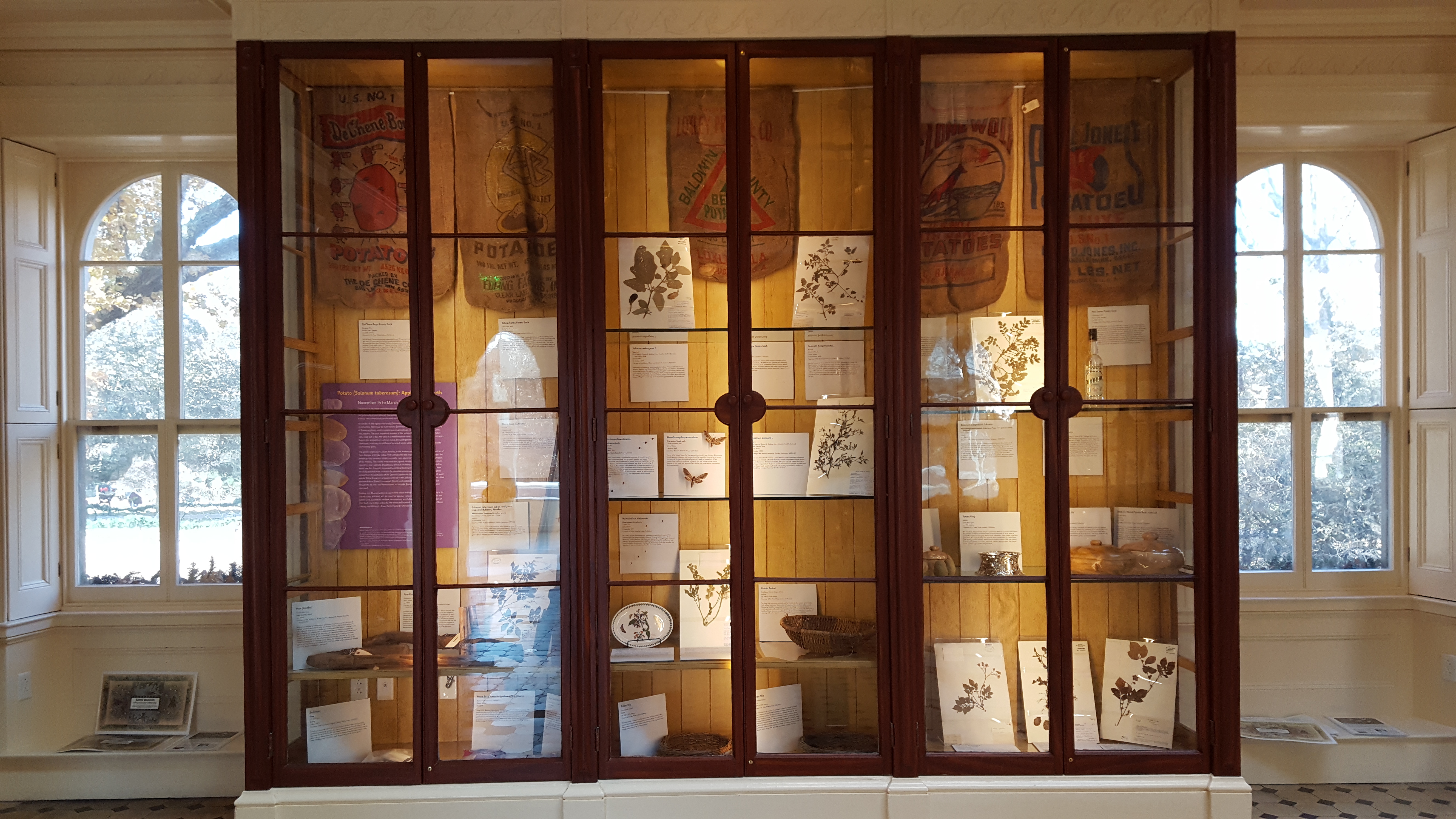
In addition to being a favorite Thanksgiving side dish, the potato is the most important non-cereal food crop in the world and is a significant part of the diet of more than 1.5 billion people. The exhibition at the Stephen and Peter Sachs Museum highlighted botany, history and contemporary art focused on this underestimated tuber around the globe.
“It has such an interesting story,” Sachs Museum Curator Nezka Pfeifer said. “It’s gone from being an American plant to being ubiquitous around the world.”
Its story continues today as the potato’s pervasiveness ties it to global issues including climate change, food insecurity and food sovereignty.
The Sachs Museum show included 40 specimens from the Garden’s herbarium representing a variety of potato species found in different parts of the world. The exhibit also showcased tools used for farming and cooking potatoes, including antique agriculture tools and more than 100 potato mashers from many different countries. Other items, like Mr. And Mrs. Potato Head, highlight the potato’s role in pop culture.
The South and Lower Level Galleries feature work from contemporary artists Seamus O. Hames, Dornith Doherty, and Corina Kennedy. Each artist has interpreted the unique story of this food crop in their artworks, especially the historic impact of the late potato blight that devastated the potato crop in Ireland in the mid-19th century.
The Garden celebrated the 250th birthday of famed explorer Alexander von Humboldt with a new exhibit at the Stephen and Peter Sachs Museum. Humboldt's journey through Latin America at the turn of the 19th century uncovered more than 3,000 plants new to science, and his detailed observations led to a groundbreaking understanding of the natural world. Visitors learned how his discoveries are still influencing Garden botanists today.
Download a copy of the paper exhibition publication here.
Plants comprise 90% of what we use or make on a daily basis, and yet we overlook them or take them for granted regularly. One of the most important—and ubiquitous—plant products is paper. Paper has made an indelible impact on human history, particularly in writing, design, art, and the spread of information through books and newspapers.
In honor of the first anniversary (the paper anniversary!) of the Stephen and Peter Sachs Museum reopening to the public at the Missouri Botanical Garden, the Leafing Through History exhibition is the Museum’s first interdisciplinary exhibition, which highlights the science, history, and art of paper and papermaking.
Grateful thanks to Nancy and Kenneth Kranzberg for their support of the exhibition.
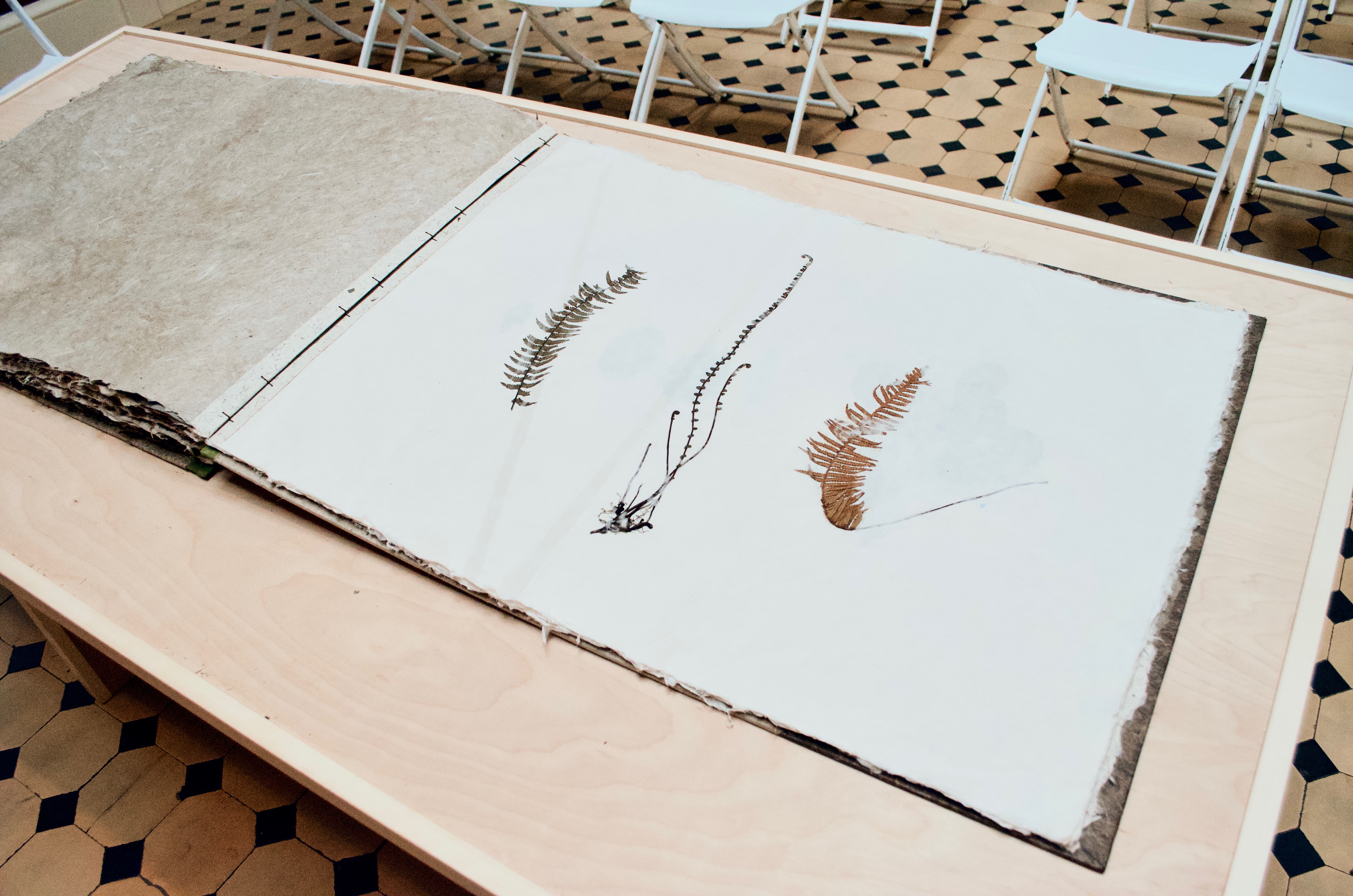
Special acknowledgments to lenders and collaborators James Lucas, Michael Powell, Megan Singleton, Mimi Phelan of Midland Paper, Dr. Shirley Graham, Greg Johnson of Johnson Paper, and the Campbell House Museum for their contributions to the exhibition.
Many thanks to the artists who have shared their work with the exhibition: Beth Johnson, Cekouat Léon, Isabella Myers, Jon Tucker, Nguyễn Quyết Tiến, Rob Snyder, Robert Lang, Shoko Nakamura, Shuki Kato, and Catherine Liu.
The Sachs Museum would also like to acknowledge a number of divisions of the Missouri Botanical Garden--Herbarium, William L. Brown Center for Excellence, Horticulture Division, Tower Grove House, Peter H. Raven Library, Education Division, and the Earthways Center--for sharing collections and expertise in the exhibition.
In partnership with the St. Louis chapter of the Japanese America Citizens League (JACL), the Sachs Museum hosted this exhibit, which told the story of Japanese Americans imprisoned at the Amache Internment Camp in Southeastern Colorado during World War II and the gardens they created while detained.
Colorado's tenth largest city during World War II was Amache, a one-mile square incarceration facility surrounded by barbed wire, guard towers, and the scrub of the High Plains.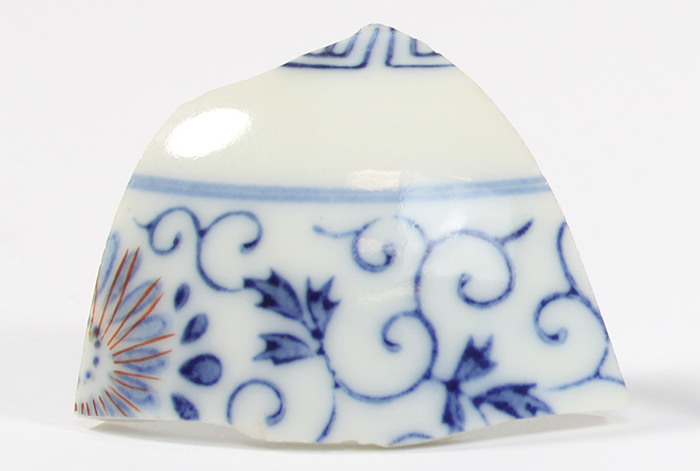
Over the course of three years, over 10,000 Americans of Japanese ancestry lived there, yet their experience is muted in our national discourse. The objects in this exhibit, fragments of those uprooted lives, encourage dialogue about this history.
On May 5th, exhibit curator Dr. Bonnie Clark gave a special presentation on the archaeology of gardens and gardeners at Amache; many of the inhabitants of the internment camp were displaced from farming communities and had a special talent for coaxing life even from the stubborn soil of the high plains. The exhibition featured 9 panels with text and photos, as well as 7 artifacts found during the archaeological dig on the camp.
Curated by the American Society of Botanical Artists and the United States Botanical Garden, Botanical Art Worldwide: America's Flora brought 46 botanical artworks of America's native plants to the Garden for a limited time in the spring of 2019.
ASBA artists worked over four years on the project, creating 240 images of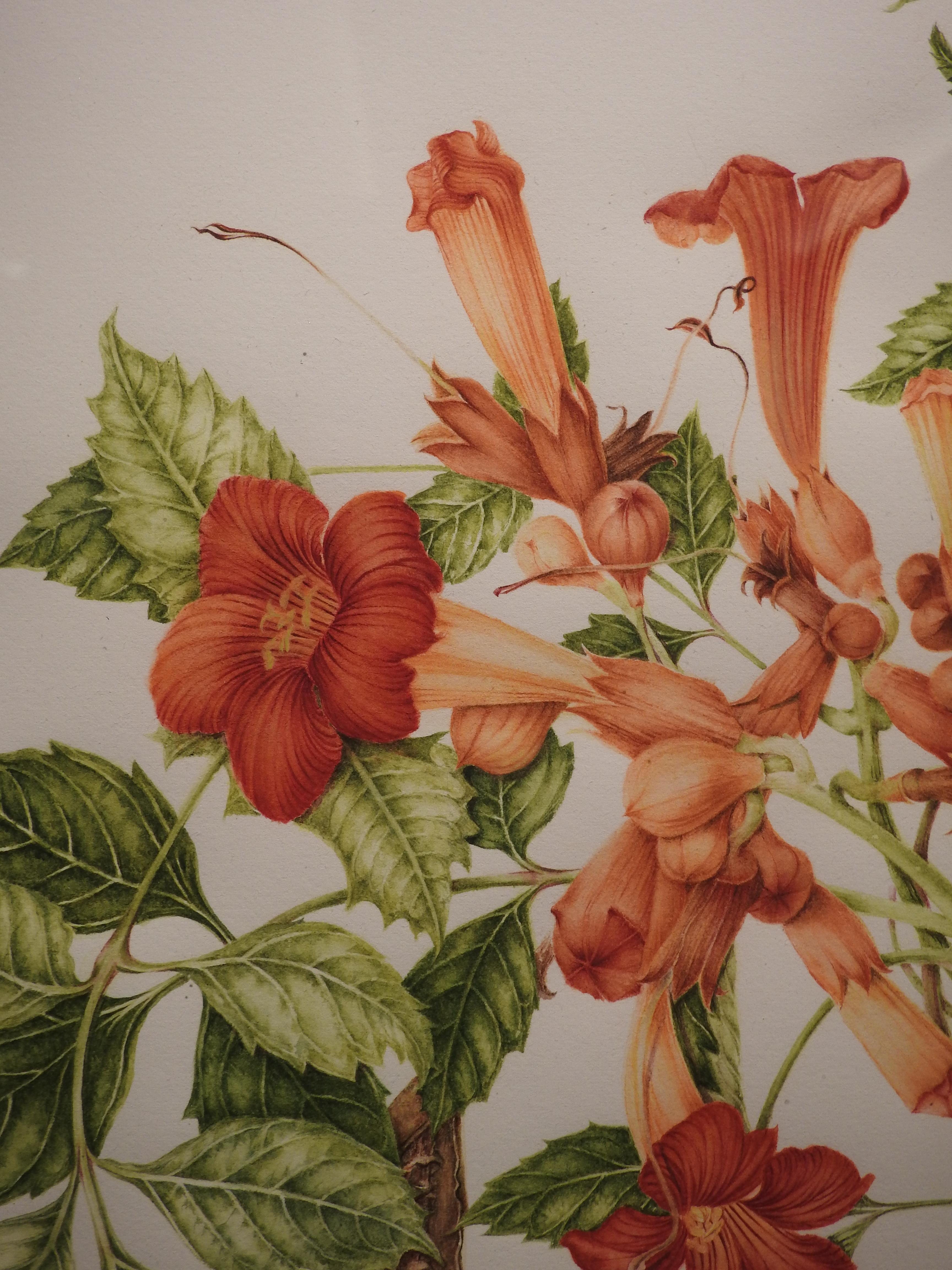 U.S. native plants, from which 46 were selected by jurors. Plants from around the country are featured, including saguaro cactus from the desert Southwest, bigleaf maple from the West Coast, bottlebrush buckeye from the eastern seaboard, and bloodroot, spanning the midwestern and eastern U.S. Familiar plants are shown, including sunflowers and violets, as well as rare species such as lady’s slipper orchids. Artists worked in a variety of media to portray their subjects, many in watercolor, but also in oil, colored pencil, pen and ink, and etching.
U.S. native plants, from which 46 were selected by jurors. Plants from around the country are featured, including saguaro cactus from the desert Southwest, bigleaf maple from the West Coast, bottlebrush buckeye from the eastern seaboard, and bloodroot, spanning the midwestern and eastern U.S. Familiar plants are shown, including sunflowers and violets, as well as rare species such as lady’s slipper orchids. Artists worked in a variety of media to portray their subjects, many in watercolor, but also in oil, colored pencil, pen and ink, and etching.
Botanical Art Worldwide: America’s Flora is part of a worldwide project, which launched nationally focused exhibitions that are simultaneously on view in 25 countries on six continents. Each exhibition features original contemporary artwork of its country’s native plants portrayed by resident artists. Visitors to each exhibition can explore a digital presentation of artworks in the other 24 countries’ Botanical Art Worldwide exhibitions.
This global collaboration aims to increase appreciation and understanding of the world’s plant diversity and to link people with plants through botanical art. The project seeks to raise awareness of the growing interest in botanical art while documenting plant species around the world. Participating countries include Australia, Bermuda, Brazil, Canada, Chile, China, Colombia, Costa Rica, France, Germany, Indonesia, Ireland, Italy, Japan, Mexico, Netherlands, New Zealand, Russia, Scotland, Southern Africa, South Korea, Thailand, Ukraine, United Kingdom, and the United States.
The island of New Caledonia is a globally recognized biodiversity ‘hotspot,’ characterized by a rich flora and a large number of endemic species (i.e., plants found nowhere else on earth), combined with highly threatened natural ecosystems.
New Caledonia has about 3,400 native plant species, nearly three-quarters of which are endemic. By comparison, Missouri has fewer than 2,000 native species, no endemic species, and is 10 times the size.
This exhibit featured a selection of some of the most interesting, rare, and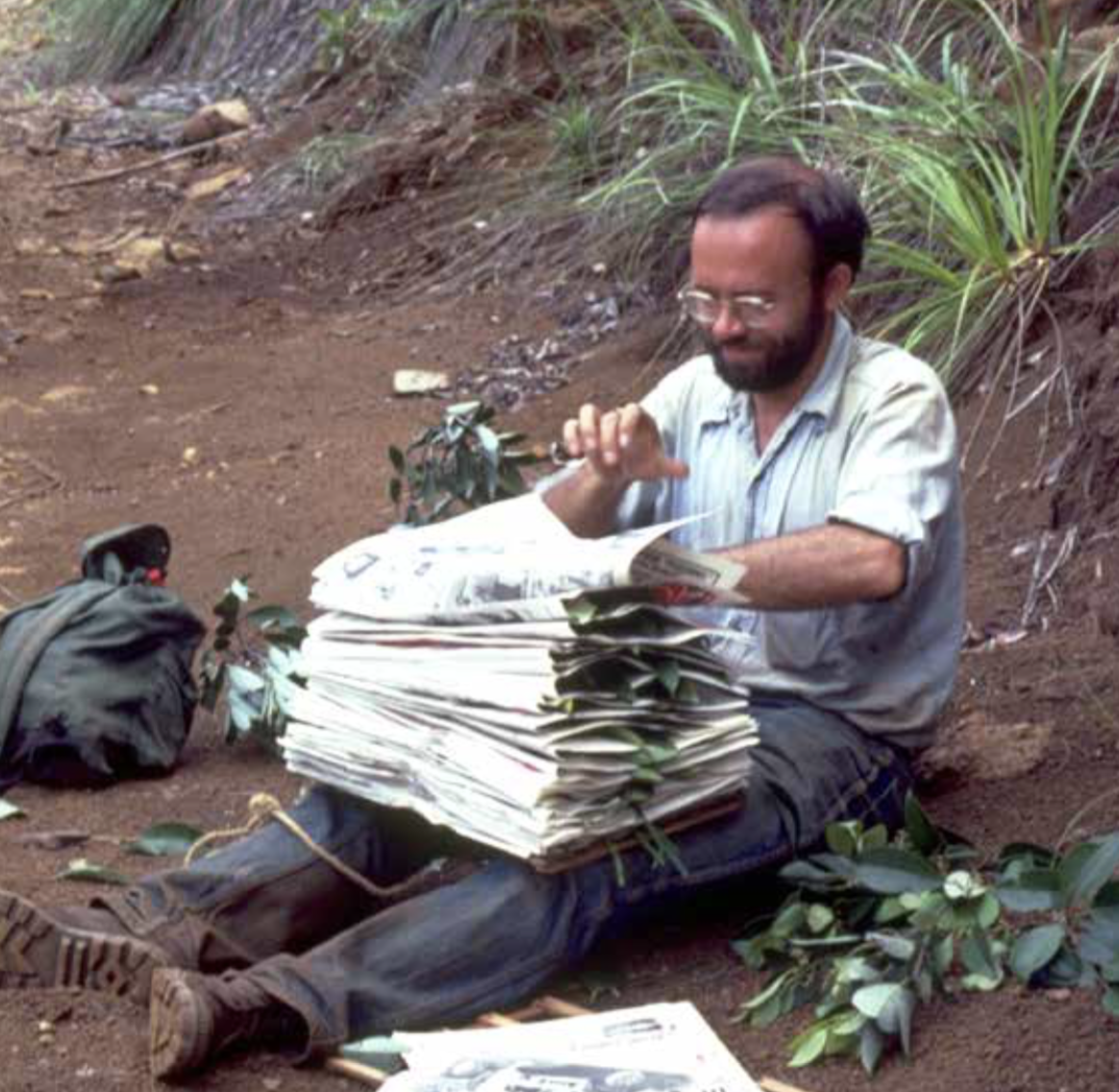 highly threatened species in New Caledonia. It showed where each species occurs and it explained the unique situation each of them faces. The exhibit was prepared by our colleagues at the New Caledonia Plant Red List Authority, who are carefully assessing the conservation status of the island’s plant species, and who kindly provided the beautiful panels so that they could be shared.
highly threatened species in New Caledonia. It showed where each species occurs and it explained the unique situation each of them faces. The exhibit was prepared by our colleagues at the New Caledonia Plant Red List Authority, who are carefully assessing the conservation status of the island’s plant species, and who kindly provided the beautiful panels so that they could be shared.
The Missouri Botanical Garden has been studying the plants of New Caledonia since the 1970s. Garden staff members Gordon McPherson and Pete Lowry have been working there since the beginning of this relationship, and they regularly visit the island to conduct field work. Their discoveries include Hooglandia, a genus new to science in the family Cunoniaceae, collected during an expedition to Mt. Ignambi in 2002. They have published nearly 60 works dealing with New Caledonia and have named more than 50 species.
The Garden is world-renowned for its herbarium, horticulture, research, library and rare books collection, and it also boasts a wide-ranging historic art and archival collection that is not often seen by the public. Painting Meadows with Delight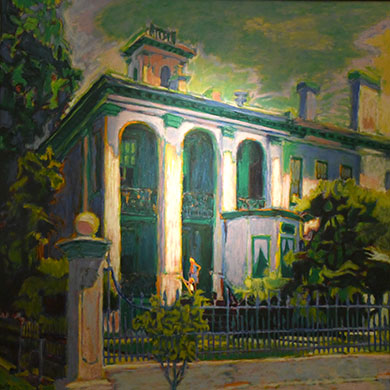 was a chance to view of some of the important paintings and works on paper amassed by Garden founder Henry Shaw and successive leaders of the Garden. Among the featured artworks were illustrations from historical botanical texts, paintings and prints highlighting the interpretation and symbolism of plants, and watercolors by highly regarded botanical artists documenting plant species around the world.
was a chance to view of some of the important paintings and works on paper amassed by Garden founder Henry Shaw and successive leaders of the Garden. Among the featured artworks were illustrations from historical botanical texts, paintings and prints highlighting the interpretation and symbolism of plants, and watercolors by highly regarded botanical artists documenting plant species around the world.